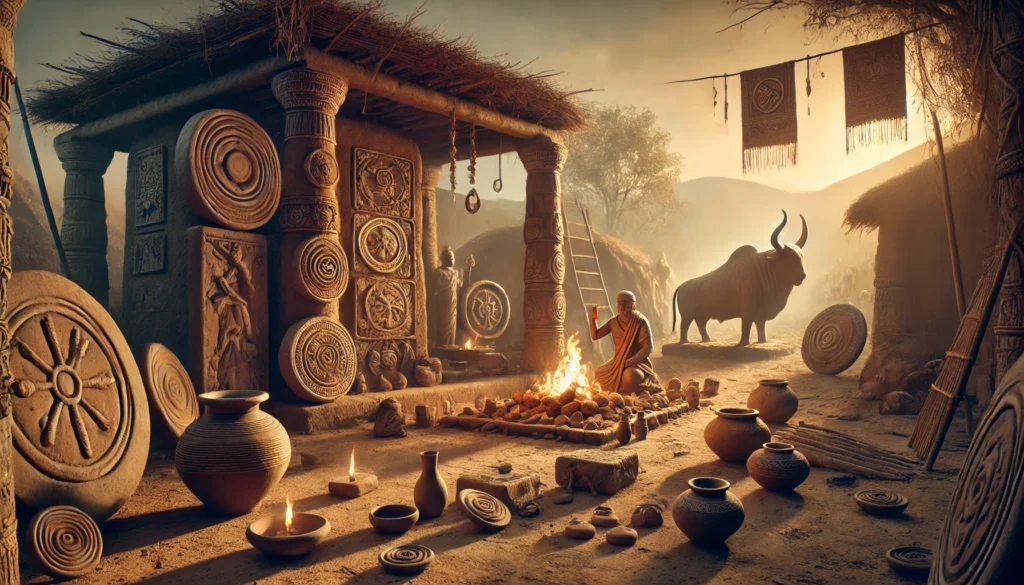The concept of curses and supernatural consequences in the ancient Indus Valley Civilization, though not well-documented due to the lack of deciphered written records, can be inferred through archaeological finds, symbolic artifacts, and later Vedic and regional cultural traditions that possibly evolved from these early beliefs. Here’s a historical interpretation of curseology within the context of the Indus Valley Civilization (3300-1300 BCE):
1. Religious and Supernatural Beliefs
- The Indus Valley Civilization had a complex religious system, indicated by artifacts such as seals, figurines, and ritual objects. Seals depicting deities or spiritual symbols suggest the worship of nature and possibly the belief in divine retribution, which is a core aspect of curses.
- Early Indus Valley seals depict entities that may represent proto-Hindu deities or supernatural beings. These figures could have been associated with blessings as well as protective or punitive powers—an early hint at the notion of curses in the form of divine justice.
2. Symbols of Protection and Ward-off Rituals
- Many symbols found on seals and pottery, like the swastika, bull motifs, and plant imagery, were thought to carry spiritual significance. These could have been protective symbols against curses or misfortunes.
- Some animal depictions, especially those involving large bulls, crocodiles, or tigers, may have symbolized both power and protection. These symbols might have been part of rituals designed to protect against curses or invoke blessings for agriculture and health.
3. Funerary Practices and Afterlife Beliefs
- The burial practices in the Indus Valley Civilization suggest a belief in the afterlife, which often incorporates concepts of curse and blessing related to one’s conduct in life.
- Graves with goods and orderly interment practices suggest that ancient Indus Valley people believed in posthumous consequences. Neglecting or dishonoring the dead might have been seen as inviting a curse, aligning with later cultural beliefs that disrespect to ancestors could lead to misfortune.
4. Healing Practices and Curse Remedies
- The civilization likely practiced early forms of folk medicine, with evidence of knowledge in herbal remedies. Some treatments might have been intended to counteract bad luck or “evil spirits,” which can be conceptually linked to curses.
- Medicinal artifacts like mortars, pestles, and amulets suggest that certain herbs or compounds could have been thought to ward off curses, especially those related to health and prosperity.
5. Influence on Later Vedic Culture
- Later Vedic texts, such as the Atharva Veda, contain extensive references to curses, blessings, and charms, suggesting that the Indus Valley’s beliefs may have influenced these traditions.
- In Vedic literature, curses are associated with the wrath of sages, karmic retribution, and divine punishment, concepts that likely evolved from older traditions present in the region, including those of the Indus Valley Civilization.
While direct evidence of curseology in the Indus Valley is limited, these early practices and symbols seem to be the forerunners of curse and protection traditions seen in later Indian culture, where curses are deeply intertwined with karma, moral order, and supernatural beliefs.
